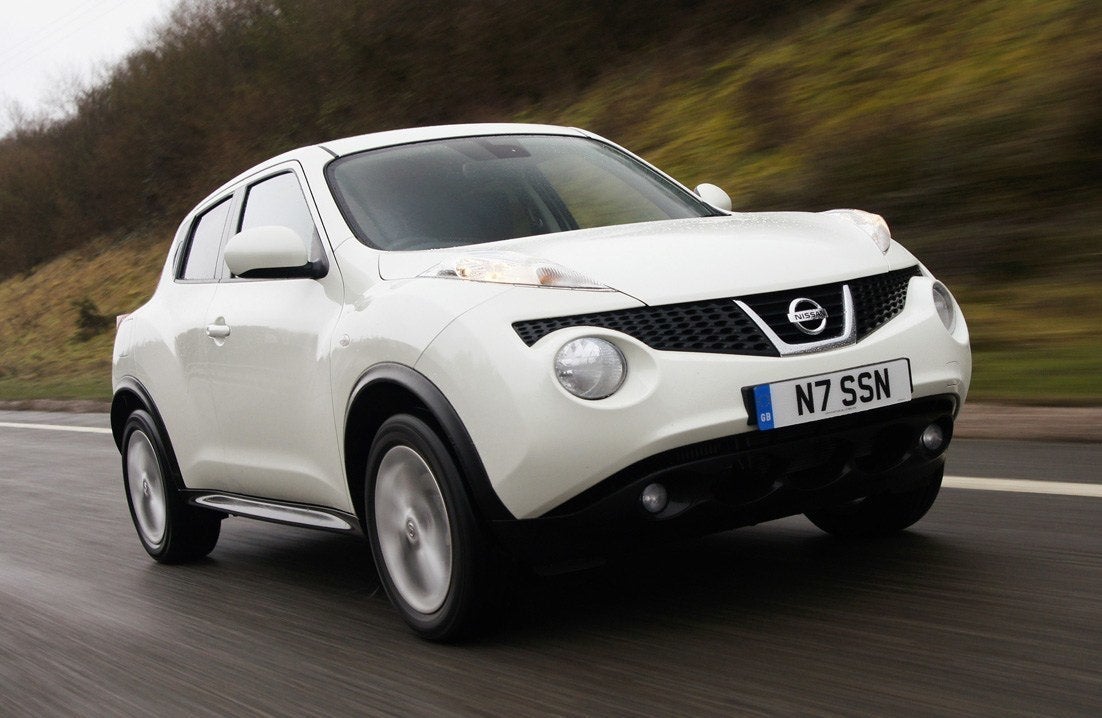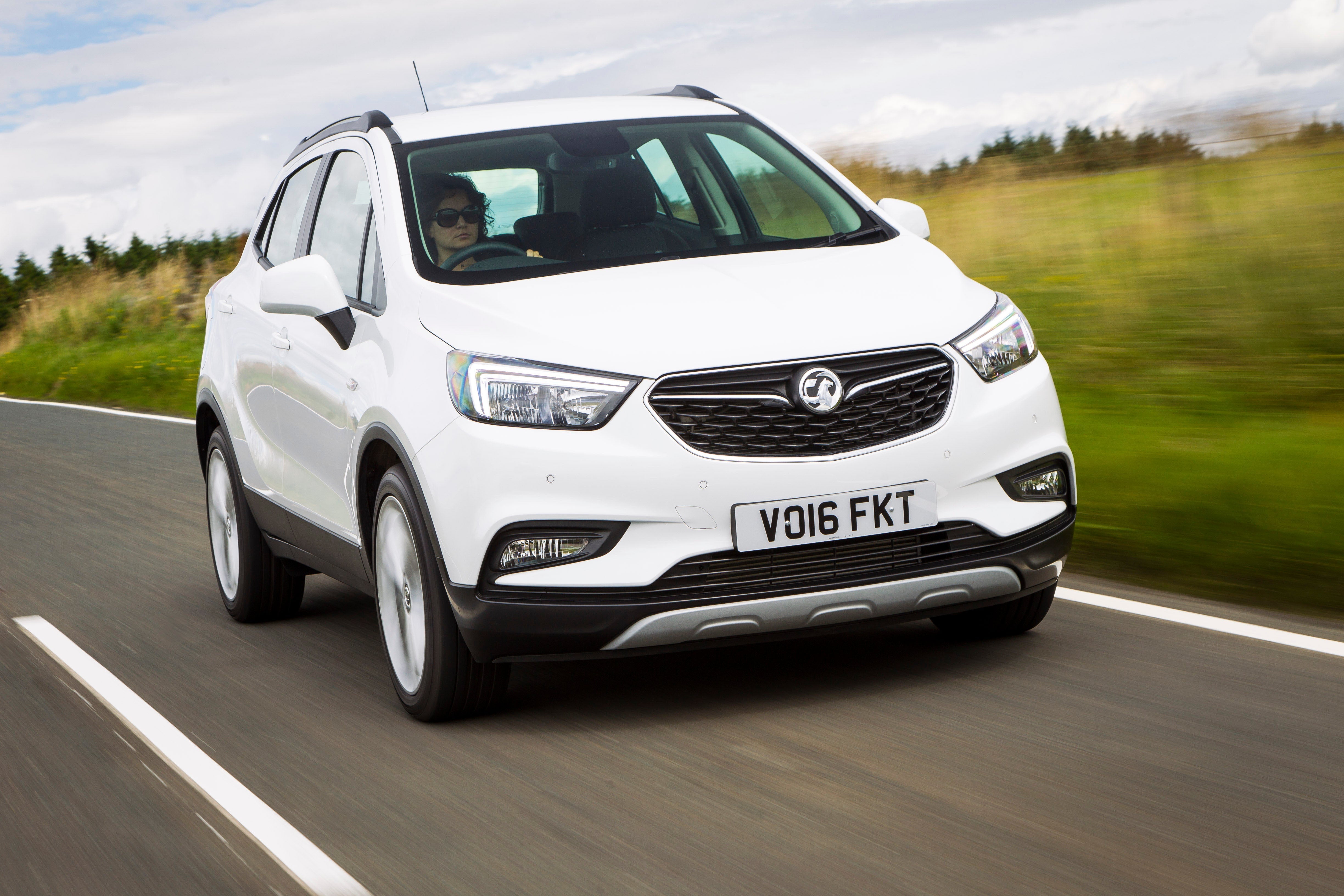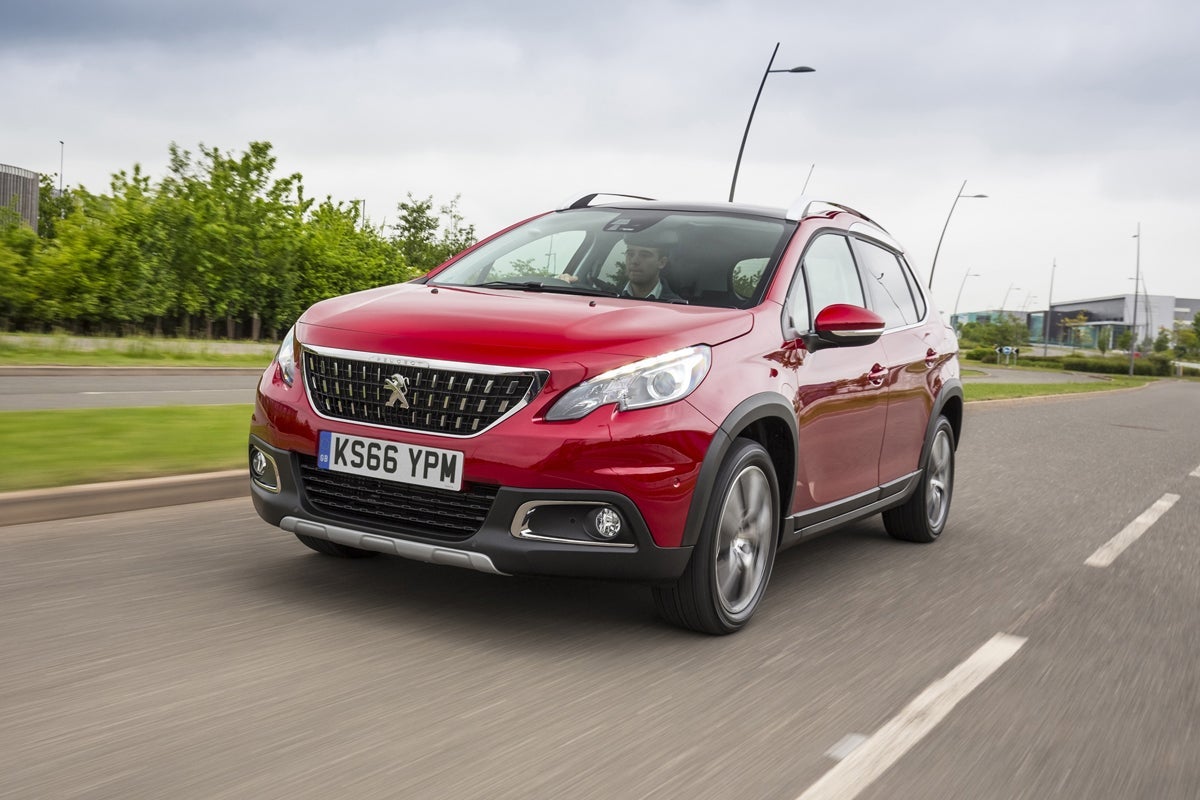Renault Captur (2013-2019) Review
Written by Andrew Brady
Quick overview
Pros
- Compact size but a high driving position
- Decent boot and sliding rear bench
- Sharp styling in the right spec
Cons
- Gutless entry-level petrol engine
- Poorly damped ride struggles on rough roads
- Thirstier than you might expect
Overall verdict on the Renault Captur
"In this Renault Captur review we're looking at one of the first small SUVs that really captured the imagination of the car-buying public. The approach was very simple; grafting a taller, attractive body onto supermini mechanicals was enough to make it a popular choice. The equipment levels are good and it's practical too, only poor ride quality and thirsty petrol engines counted against it."
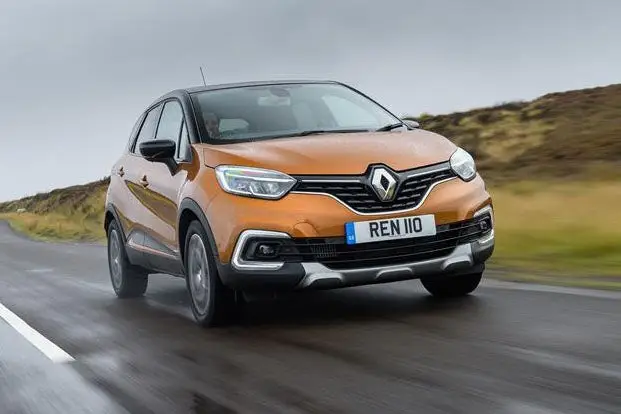
Take a hatch like the Renault Clio, make it taller and longer, give it head-turning style and a wide scope for personalisation, keep the frugal engines and charge a little more for it; that's the small SUV formula.
It's the recipe that Renault used to create the Captur, and it seems that the buying public liked the taste, as it sold like hot cakes ever since, with a brand spanking new version introduced near the end of 2019. The chunky off-road aping design is a big part of its appeal, and it still looks fresh compared to newer rivals.
Speaking of rivals, there are now a near-endless number of cars in this mould to choose from, from familiar names such as the Nissan Juke and Peugeot 2008 to newer arrivals with equally energetic titles like Kia Stonic and Volkswagen T-Roc. So why should you choose the Renault over these competitors, other than the merits of its individual looks?
A facelift in 2017 added eye-catching LED fog lights, sharper wheel designs and new two-tone colour options for buyers to express themselves with, and an incremental improvement to cabin quality and its infotainment. Kit levels are good, especially in the mid-range; climate control, sat-nav and rear parking sensors all feature.
It's also one of the more practical choices in this class, with a sliding rear bench, a smartly designed, flexible loading bay, and decent level of passenger space. Skoda's Kamiq is better for carrying three in the back, and has a slightly larger boot (with the seats in their normal position) but the Renault Captur should work well for a family.
Despite the SUV styling cues, the Renault Captur is front-wheel drive, no matter which engine you choose. Originally it came with two petrols, one with a 0.9-litre capacity that's a bit underwhelming, and a quicker 1.2-litre model that is better suited to driving with a fully-loaded car, both are turbocharged but the former feels a bit gutless.
The entry-level car is manual only, but the middle output comes with the option of an EDC automatic. A 1.5 dCi diesel can be had with either 90PS or 110PS, but only the latter feels strong enough for easy overtaking. In its twilight years, Renault introduced a 1.3 TCe petrol with a bit more muscle (either 130PS or 150PS) and the option of a revised seven-speed EDC dual-clutch automatic that's smoother than the older six-speed unit.
On the road, the Renault Captur is average at best, with a number of undesirable qualities that mean it's better suited to town driving than motorway jaunts. Refinement is ok, but the ride is an odd mix of soft, wallowing body roll and crashy firmness on rougher surfaces, and it's nowhere near as agile or exciting as the best in this class.
Along with an uneven ride and underpowered engines, the major issue with this generation of Captur is with the build quality of the cabin, and the dated infotainment system, and it lacks the latest active safety kit too. As a used car, it's a compelling bargain, but at the new end of the market there are many better alternatives.
If you're looking for the newer version, you need our Renault Captur review.
Is the Renault Captur right for you?
At their best, small SUVs like the Renault Captur give buyers all the advantages of a hatch (low running costs, easy-going to drive, cheap to buy) but add in their own dollop of desirability, style, and everyday practicality.
That last part is something this car does well. Innovative details like the removable, washable seat covers, a sliding rear bench that lets you vary the size of the boot, and good visibility make it a handy family runabout.
It would be a good second car, but with some weaker engines and so-so cruising refinement, it's not the best for tackling long motorway journeys, and is better suited to town driving, where the light controls work better.
No small SUVs are particularly exciting to drive, but the Renault Captur is among the least well sorted. This has an effect on the ride comfort and stability, so will matter to everyone, not just keener drivers interested in a sportier feel.
What’s the best Renault Captur model/engine to choose?
Let's start off with the models that are best avoided. While popular, cheap to insure and (supposedly) frugal, we'd skip the 0.9-litre petrol that props up the range. It's far too slow, forcing its drivers to thrash it to keep up with traffic, which in turn has a negative impact on its refinement and fuel economy, failing to cut the mustard.
The 1.5 dCi 110 diesel is no powerhouse, but clips along nicely, and won't struggle on the motorway. It's the best choice for higher mileage drivers, with the quiet 1.2 and 1.3 TCe engines the pick from the petrol cars.
As for trim, the higher up the range you can go, the better your Renault Captur will feel. In some cars the difference in quality is marginal between the versions, but in the Renault the posher trims look significantly smarter inside.
In older cars that means going for the Renault Captur Dynamique S model. It brings you sat-nav, colourful interior trim, rear parking sensors, and a two-tone exterior. From the post-facelift line up, stick with the Iconic or GT Line spec.
What other cars are similar to the Renault Captur?
The Captur is a pioneer, one of the first small SUVs to hit the mainstream. It soon sprang up in car parks, petrol stations and suburban cul-de-sacs across the land, just like the first Nissan Juke and Peugeot 2008.
Its staggering popularity spurred the brand's rivals into action, and now almost every manufacturer offers buyers at least one model that is similar in size, shape, price and execution to the funky-looking Renault.
Some of these newcomers, such as the SEAT Arona and Ford Puma, are a lot sharper to drive, with nicely finished interiors, and extra safety features. Others, including the Kia Stonic and Hyundai Kona, get more kit.
For a more premium package (at a higher price) Audi's Q2 stands pretty much alone, although a Volkswagen T-Roc is more practical. Both offer buyers the possibility of a totally nutty 300PS version with all-wheel drive. However if you're looking to save money, Dacia's Duster is a bigger, no frills alternative with off-road chops.
Comfort and design: Renault Captur interior
"Drivers stepping into the Renault Captur from a small car will love its raised driving position. In some of its peers, you sit so close to the road you may as well be in a small hatch, but the Renault gives you a great view of the road."
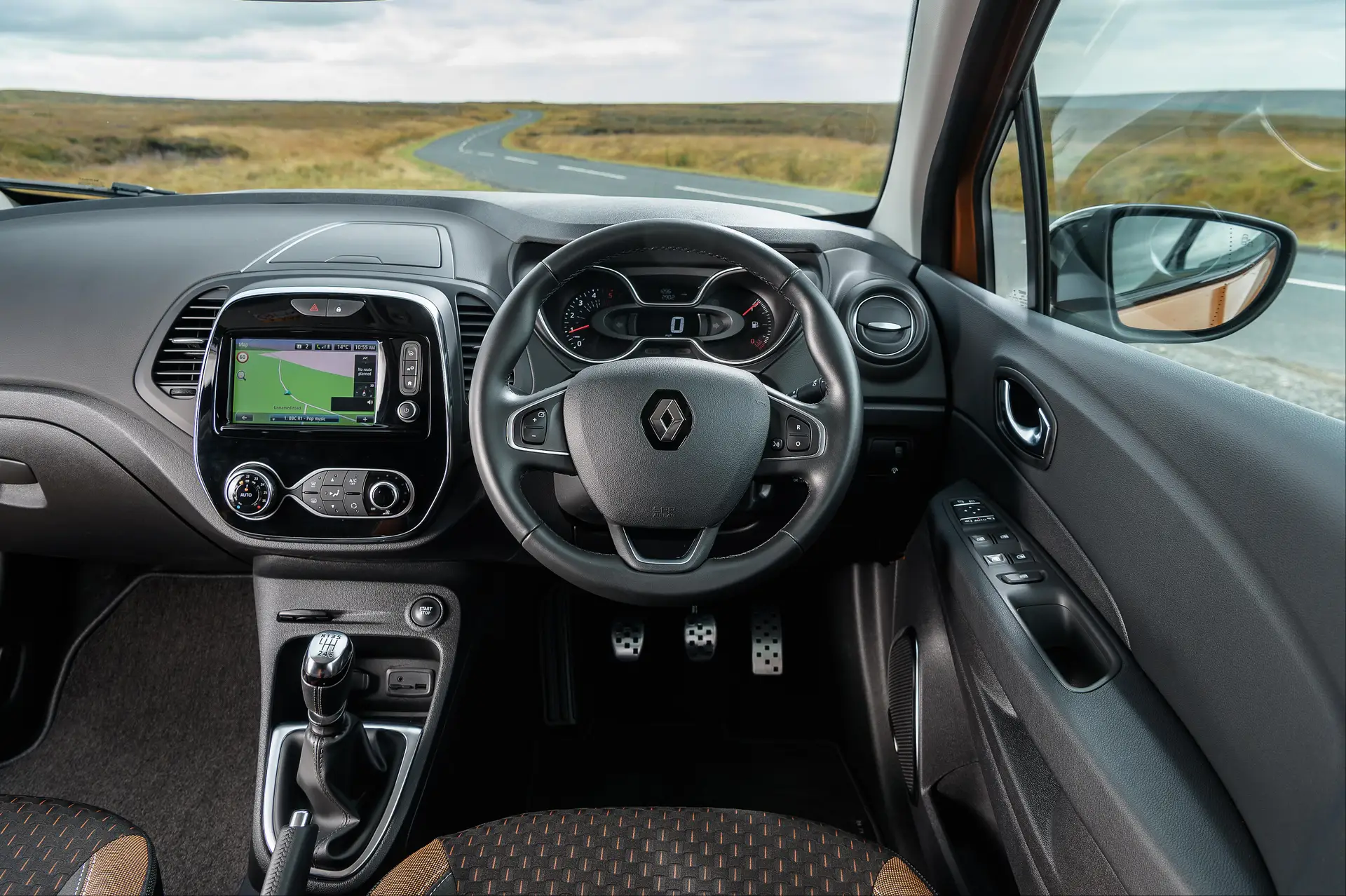
Getting comfortable is relatively straightforward, with a steering wheel that comes towards you and moves up and down, and height adjustable driver's seat, but the clutch pedal is mounted high; not ideal for taller folks.
The seats are quite firm, but not very supportive, you'll find yourself fidgeting about after hours at the wheel.
The layout is pretty simple, with almost all the major controls grouped together on a blobby centre stack that 'floats' in the middle of the dash. The ventilation switches and dials are nice and chunky, and clearly labelled. It has a manual handbrake jutting from the floor, unlike the more fashionable electric switch to free up space.
There are a few French foibles though. The dials are dramatically flared, with a digital speedo cutting through them in the centre. It probably looked wonderful in a designer's sketchbook, but makes them harder to read. Cruise control is fitted across the range, but operating it involves using three different sets of switches - why?
Still, it's not as counter-intuitive as the original Peugeot 2008 in here, and the relatively conventional layout means that once you've grown used to the odd quirk or two, it should be simple enough to operate smoothly.
Quality and finish
This is another area the Renault Captur struggles to impress. Many small SUVs feature plenty of hard surfaces and cheaper plastics, but few look quite as joyless or feel as basic as the entry-level versions of the Renault.
The muted choice of dash materials mean it's greyer than an elephant's funeral in here, and even high spec cars with their colourful orange and blue dash inserts and chrome details are hard to describe as upmarket. Only mid-range models get a leatherette covered steering wheel, along with a rather wobbly central armrest.
Some of the blame lies with the design. The narrow centre console with its gloss black surround gets lost in the huge swathes of dull plastic that comprise the rest of the dashboard. Renault tried to address the issue in the facelift, adding slivers of soft-touch trim to the doors and upper reaches of the dash you'll touch regularly.
However the plastic around the gear stick, handbrake and the back of the front seats is still properly budget, with a textured finish that will mark easily and start to look tired after going a few rounds with a bored toddler.
The switchgear on the centre console feels OK to operate, but the panel itself is a bit creaky, and Renault has an unenviably poor reliability record in owner satisfaction surveys, so it's hard to trust its longevity over time.
Infotainment: Touchscreen, USB, nav and stereo in the Renault Captur
Connectivity is really important to buyers in the class. More importantly, it needs to be of the variety that just works. No busy parent wants to be faffing with confusing menus and settings in between family shuttle runs.
While the Renault Captur has steadily improved in this area over time, it still falls short of that benchmark. Entry-level cars just get a smartphone cradle and Renault's R&Go app, which is harder than using a windscreen mount.
These models have just two tinny sounding speakers, although later models do have DAB digital radio, USB ports for charging, and Bluetooth, with controls for audio volume and hands-free calls on the steering wheel.
From Dynamique Nav trim upwards, as the name suggests, you get a 7.0-inch touchscreen, speakers for the rear passengers, and a navigation system. However it's a pretty sub-par system by any standard. Ponderous responses, muddy low-res graphics and a confusing menu system combine for a frustrating user experience.
After the 2017 facelift, pricier models were fitted with a smarter 'R-Link' system. The navigation setup from TomTom was a major improvement, but the screen remained laggy, and even as late as 2018 this system was not compatible with Apple CarPlay smartphone mirroring, only supporting Android phones with apps.
It's the sort of kit that comes as standard on most rivals, and frankly that customers expect on the spec list.
On lower spec cars you could pay to upgrade to the R-Link system, and Renault offered it as a bundle with a punchy BOSE stereo upgrade. If you're a music lover, then this premium stereo is well worth tracking down.
Space and practicality: Renault Captur boot space
Although not much longer or wider than a Clio, the taller Renault Captur has more space between its wheels, and offers a considerable increase in practicality thanks to some fiendishly clever on-board storage solutions.
All models come with a sliding rear bench as standard, which allows you to prioritise rear legroom or boot space depending on the size of your passengers, using either a handle in the boot, or from under the seats.
In its farthest forward setting, the back seats are only really suitable for kids. It leaves you with an ample 455-litre boot for all their clobber though, which is deeper and longer than most cars from the class above.
Slide them all the way back (an easy one-handed operation) and legroom is generous. Headroom will be a bit tight if you're over six foot, and the cabin is narrow, so carrying three is an uncomfortable affair. Still, there is more space for two back here than you'd find in the original Nissan Juke, and a decent 377-litre boot too.
It's thoughtfully designed too, with a false floor that you can raise or lower to remove the loading lip. It means that when you fold down the two-way 60:40 split-folding back seats, they lie perfectly flat; great for unloading. However in cars fitted with the optional spare wheel – it lives under the floor – you lose this key functionality.
The family-friendly focus doesn't stop there either. On high spec cars, the seat covers are removable, so you can unzip them, and bung them in the washing machine to get out any spills. A potential lifesaver for parents. Of course, the tall suspension helps with young kids too, as you don't have to lean down as far to strap your little darlings in, and fitting a child seat is no hassle either. The doors open wide and the ISOFIX are easy to find.
Up front though, things are a bit less rosy. Space isn't the issue, but stowage is. Unlike European cars, which get a clever (and massive) filing cabinet-style glovebox, on UK models it's half the size. Other oddment spots (including a cubby atop the dash, and on some models, an armrest) are just too small to be genuinely useful.
Likewise the cupholders up front are tiny, and mounted on the floor, in between the handbrake and the seat rails, possibly the least practical spot to have a hot drink, as it's hard to reach, and doesn't feel at all secure.
The Renault Captur dimensions are 4122mm long, 1778mm wide and 1566mm tall.
Handling and ride quality: What is the Renault Captur like to drive?
"The Renault Captur fails to impress on the road. It's not as comfortable as a Citroen C3 Aircross on bumpy lanes, or as grippy through corners as the Ford Puma and SEAT Arona. It aims for the middle ground, missing its mark."
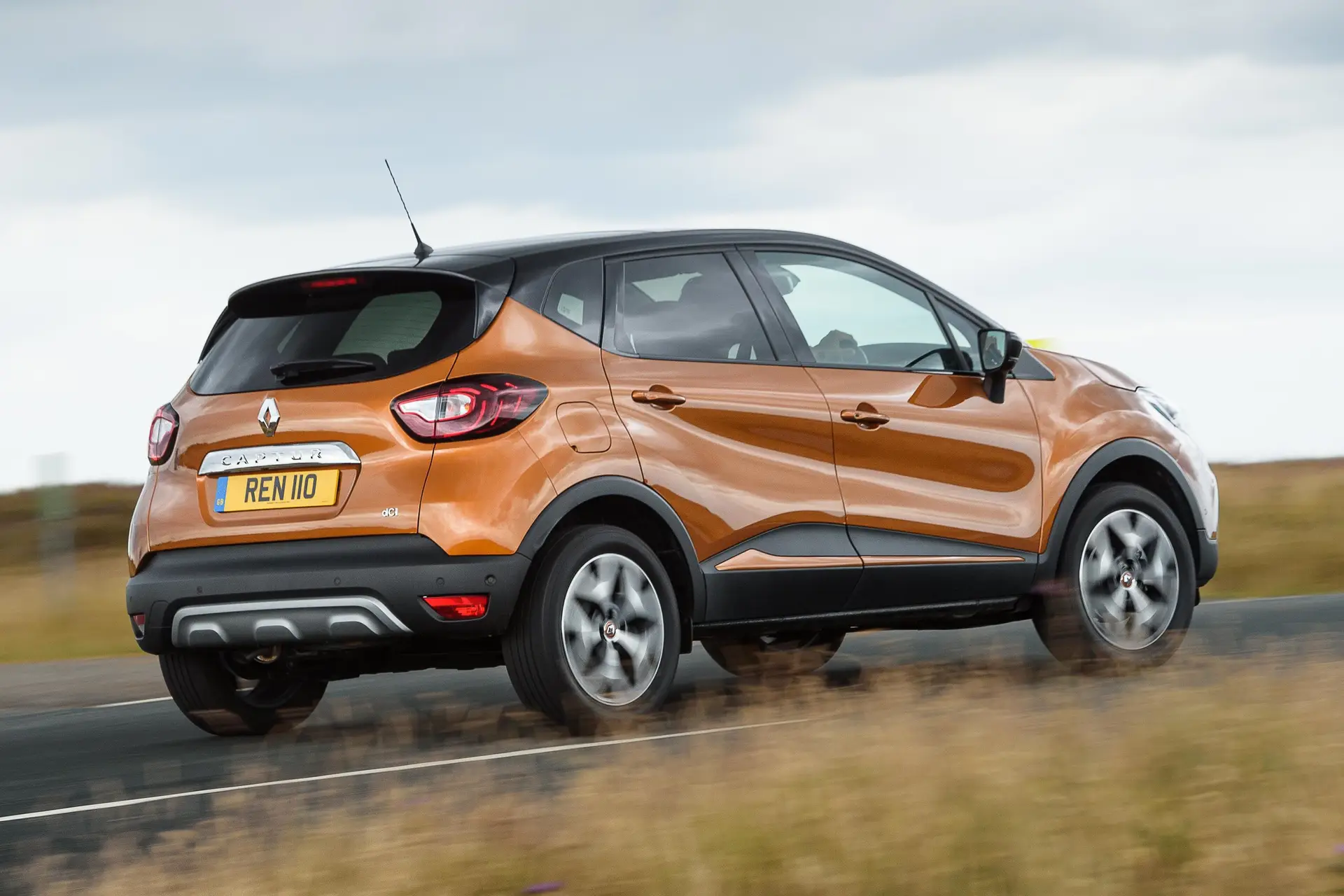
We could never accuse it of being difficult to drive - quite the opposite in fact - with its super light steering, a compact set of dimensions, and great forward visibility, it's a doddle to manoeuvre around a tight multi-storey.
Unfortunately, the steering wheel never gains any meaningful weight once you've ventured beyond city limits. It feels disconnected from the front tyres, so you're never sure of the amount of purchase they can provide. A long, sweeping corner will see you sawing away at the wheel, just trying to follow a consistent line through it.
The ride is also inconsistent to the point of being frustrating. On smoother roads, the soft suspension does its job properly, absorbing crests and keeping your passengers comfortable. Up the pace a little, or happen on a mid-corner bump though, and it loses its composure, wallowing from left to right in a rather ungainly fashion.
That's not the worst of it either. Encounter the type of craggy, pock-marked road that typifies most of the UK's crumbling infrastructure, and it sends a jarring shudder through the cabin, the wheels busily pattering away. It's not harsh all the time, so when it does suddenly seem to fall apart, it comes as a fairly unpleasant shock.
It's not a disaster by any means, and this erratic character was less of an issue when its closest rivals were equally tepid from behind the wheel. Now though, this class has cars with genuine poise, balance and grip. Measured against these competitors, the Renault Captur is left high-and-dry whether you're after comfort or thrills.
What engines and gearboxes are available in the Renault Captur?
Originally, the Renault Captur was offered with four engines that it shared with the Clio; two petrols and two diesels. All of them are turbocharged, and send power to the front wheels only, so the Renault Captur is an SUV for the road.
Propping up the petrol range is a 0.9 'TCe' three-cylinder producing 90PS and a modest 140Nm of shove. It manages to keep up with the hustle and bustle in town, but feels weak and breathless compared to its rivals. If you want to use the Renault Captur as a family vehicle, the 1.2-litre four-cylinder is a better bet. At first it was only available with a jerky twin-clutch automatic with six speeds, but a manual gearbox arrived fairly shortly after.
This engine doesn't feel out of its depth on the motorway, with flexible performance, superior refinement and an unstressed character that makes it more relaxing to drive on faster roads. In the last year of production it was replaced by a 1.3-litre engine that was even nippier (with either 130 or 150PS) but is quite hard to find.
As for the diesels, both have a 1.5-litre capacity, and comes with either a five- or six-speed manual, or the optional dual-clutch automatic depending on their age, and either 90 or 110PS. They'll both be cheaper to run than any of the petrols, but only the higher powered unit feels more muscular than the petrol at speed.
It's a shame that the dCi 110 is far less common, as it accelerates quicker, requires fewer gearshifts up and down the rubbery manual 'box, and it generally better suited to long trips than the slightly strangled dCi 90.
Refinement and noise levels
Some small SUVs manage to elevate themselves from the hatches they are based on, tricking you into thinking that you're driving a bigger, more substantial car. That's not really the case in the Renault Captur though.
It does a reasonable job preventing unwanted hubbub entering the cabin at speed, but blustery wind noise, rumbling from the tyres and (in the 0.9 TCe three-cylinder) a thrummy engine note make their presence felt.
The other petrol engines are fairly hushed, and benefit from an extra gear ratio, making them less strained to drive on the motorway. The optional dual-clutch automatic is not the smoothest, and slightly reluctant to shift.
Picking a 1.5-litre diesel will mean you'll hear a bit more clatter and feel some vibrations though the controls at low speeds, but they settle down promptly once you crack on, and are never harsh or irritating to drive far. The 1.6-litre from the Renault Megane is considerably smoother at all speeds, so it's a shame it's not available here.
Still, the Renault Captur never performs that magic trick of feeling like a car from the class above, something that the slightly larger Volkswagen T-Roc does superbly.
Safety equipment: How safe is the Renault Captur?
Renault has a strong record of building safe cars, and the same was true of the Captur when it was new. It got a five-star rating from Euro NCAP in 2013, with an 88% score for adult crash protection and 79% for kids.
Trouble is, by modern standards (and the much tougher crash testing regime today) it falls behind on safety assistance, lacking the semi-autonomous systems that are proven to lower your risk of accidents in cities.
As standard, all cars come with four airbags, ISOFIX anchors in the front passenger and two outer back seats, a tyre pressure loss warning, foam repair kit for punctures, and child safety locks in the rear doors.
In terms of drivers aids though? Slim pickings. A hill start assistant will stop you rolling back on yourself at a steep junction, but you have to travel all the way up the trim range to get parking sensors or a reversing cam. An update in 2018 added blind-spot detection to the priciest GT Line versions, which works by illuminating an orange icon in the wing mirrors if there is a car or motorbike hovering out of view, and optional parking assist.
However, autonomous emergency braking (a system that can help inattentive drivers out and brake for them if it senses an oncoming collision) traffic sign recognition, and lane-keeping aids are not offered on any trim. Newer rivals will fit this gear across the range, and it can definitely help you avoid accidents in the first place.
MPG and fuel costs: What does a Renault Captur cost to run?
"Renault made some lofty claims regarding the fuel efficiency of diesel Capturs. Some of the official figures implied that well over 70mpg was possible, but our own experience suggests less than 60mpg is more likely."
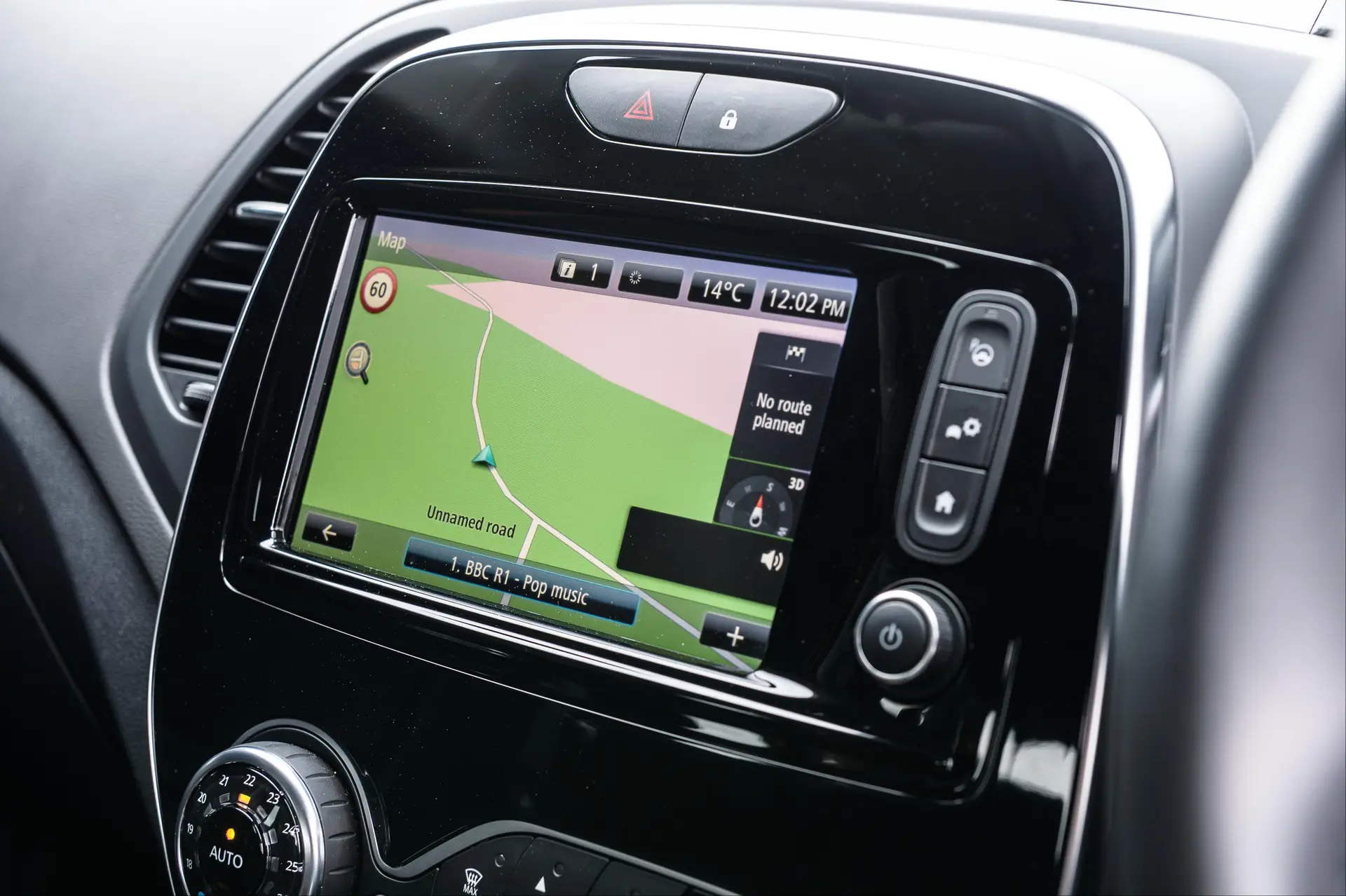
That's distinctly average in such a compact, lightweight car, especially when the Clio fitted with the same unit can achieve 60.5mpg (according our Real MPG owners' results) but at least the EDC auto is equally frugal.
It's a similar story in the petrols. The claimed figures are mid-forties, but a lack of oomph in the smallest unit means high thirties are what most buyers will see day-to-day; pretty poor by the current class standards.
All Renault Capturs have a 45-litre tank, which means on a good day you'll be able to go around 380 miles in a petrol and over 500 in the diesel, but top spec models fitted with mud and snow tyres will need to fill up more often.
How reliable is a Renault Captur?
The Renault Captur scored a disappointing 8.71 out of 10 for reliability on the HonestJohn.co.uk Satisfaction Survey, making it one of the worst-performing Renaults in this respect. A number of recalls have been issued for the Renault Captur, including faults with wheel hubs, brakes, wiring, seat belts and catalytic converters, so make sure any car you look at has had any necessary rectification work carried out.
None of this should comes as a surprise given that Renault finished a lowly 27th out of 30 manufacturers in the same survey.
Insurance groups and costs
The Renault Captur will be more expensive to insure than a comparable hatchback like the Ford Fiesta or Clio, but still not prohibitive. The range kicks off in Group 8, but stretches to Group 20 in the poshest trims.
Younger drivers should go for the 0.9-litre TCe petrol, in Expression+ or Play trim, to keep their premiums to an affordable level, and it undercuts newer rivals, such as the Peugeot 2008, Suzuki Vitara and Nissan Juke.
Older versions of the Peugeot and Nissan will cost you about the same, but the gap between the cheapest car and the punchier petrols is significant. The previous 1.2-litre is Group 14, the newer 1.3 TCe Group 15.
VED car tax: What is the annual road tax on a Renault Captur?
Affordable running costs are a big part of the Captur's appeal, but to minimise your tax bills, find a used car registered before April 2017. These models pay a variable rate based on the CO2 efficiency of each engine.
Most of the diesels were tax exempt under this system, and the smaller petrols are cheap, but the 1.2 TCe in higher trims soon sees your outgoings shooting up, to around £130 if you paired it with the dual-clutch auto.
If you buy a newer Captur you'll pay a flat-rate of £165 per year, the same as all petrol and diesels that cost less than £40,000 when new. There's no danger of even the fanciest model breaking through that threshold.
How much should you be paying for a used Renault Captur?
"Urban runabouts like these tend to get into a few scrapes so although you can buy a 2013 or 2014 example for around £4,500, many are 'Cat S'. This means they've previously been crashed and repaired afterwards. We'd avoid these, as many Capturs at this price have lots of miles and patchy service history."
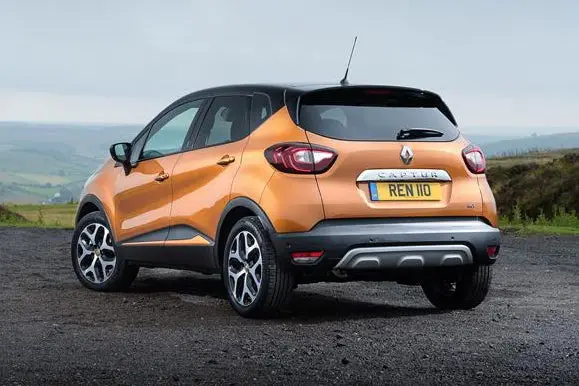
Instead, stretch your budget to £8,000, and you'll be able to get a great spec 2016 car with less than 50,000 showing on the odometer. Plenty are available, most with either the 1.5-litre dCi or entry-level 0.9 TCe petrol. However, the perky 1.2-litre TCe is rarer, and in high demand. Expect to pay about £9,000 for an automatic.
A newer, post-facelift model will cost you about the same (with the smaller engine) in mid-range Dynamique Nav or Iconic trim, with a fully stamped service book, rising to between £12,000 and £15,000 for a GT Line. At the top end, you should be looking at the new 1.3-litre petrol, and less than 5,000 miles covered in total.
Trim levels and standard equipment
When it launched the Renault Captur was equipped like any other Renault, with a basic stripped-out rental car spec at the bottom with a tantalisingly low price tag. Yet as its popularity grew, the brand added more and more kit.
For that simple reason, when looking for a used model, you'll want to avoid the earliest examples, especially in sparse Renault Captur Expression+ trim. Go for the later ones, as you'll get a better level of specification pound-for-pound.
Originally there were five trims, with confusing names like Renault Captur Signature and Renault Captur Dynamique. The latter came in two flavours but both feature sat-nav, a faux-leather steering wheel, nicer interior, and climate control; good stuff. This is the one you want if you're looking at pre-facelift models, with decent kit and only a few missing items.
The former was introduced in 2017, and was the most adventurous spec to date, with mud and snow tyres, it also came with an advanced traction control system to give it a smidgen more off-road capability. It came full of desirable extras too, including a centre armrest up front, an upgraded media system and leatherette trim.
In 2018 the range was revised to finally make it less mystifying, and copy the trim structure from the Clio and Megane.
Newer cars come in Play, Iconic, or GT Line guises. Mid-range Renault Captur Iconic gains a touchscreen sat-nav, and rear parking sensors. Top spec Renault Captur GT Line cars are the most luxurious you can get, with brighter LED headlights, and Renault's R-Link infotainment setup (a major improvement on the standard system) and heated seats.
One thing to note; only the very late run-out models got full Apple and Android smartphone compatibility, and if you are looking at a used example, try and find one with the Techo pack fitted. Sadly not a beefier stereo, but the improved R-Link infotainment system we mention above, which is still not great, but at least usable.
Ask the heycar experts: common questions
Why was the Renault Captur discontinued?
Is the Renault Captur a good reliable car?
Is the Renault Captur worth buying?
Stay up to speed with great offers plus the latest car news and reviews
Keep me updated by email with the latest advice, news and offers from heycar.
By submitting you agree to our privacy policy

